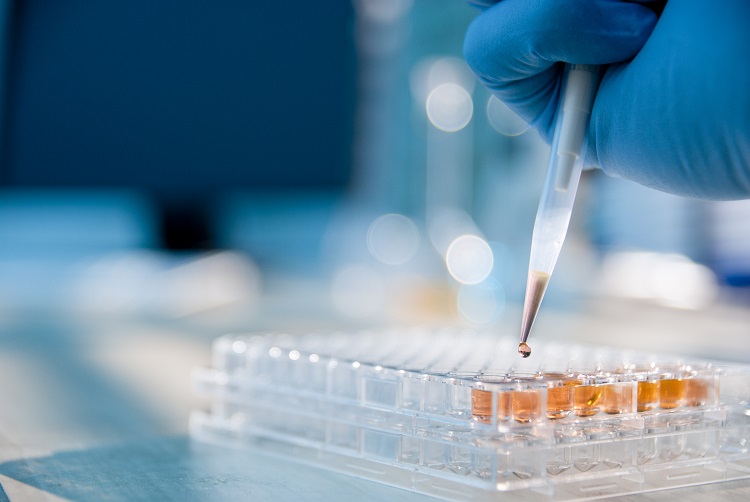EU to reform rules for drug-device combinations, product information and pharmacovigilance
Published on 5th September 2023
The proposal's eight-week consultation has allowed the sector to assess the draft legislation in these and other areas

The European Union's proposed legislative reform of the pharmaceutical market comes three years after its new strategy for Europe outlined priorities for a patient-centred environment in which the EU industry can continue innovate and be a global leader in the field.
The reform proposal set out in April will affect key regulatory instruments, including Directive 2001/83/EC, Regulation (EC) 726/2004 and the current rules on medicinal products for paediatric use and orphan drugs.
The reform aims to ensure that patients across the EU have access to medicines, there is security of supply, the regulatory pharmaceutical framework is simplified and adapted to scientific, technological and environmental changes.
The broad reform package includes medical devices and combinations, product information and pharmacovigilance. What does it specifically proposes in these area?
Medical devices and combinations
The draft reform proposals offer the first legal EU definitions of drug-device combinations, following the US example and building on guidance on the (EU) 2017/745 Medical Device Regulation (MDR) enacted by the European Medicines Agency (EMA).
Device-drug combinations are a medicinal product with an action that is ancillary to that of the device or are intended to administer a medicinal product, remain governed by and are assessed and authorised in accordance with the MDR – and without prejudice to the provisions of the revised EU pharmaceutical legislation on the medicinal product part of those combinations.
The proposal addresses other possible combinations between medicines and other products.
'Integral combination'
The proposal defines an "integral combination of a medicinal product with a medical device" as a combination of a medicinal product with a medical device (as defined by the MDR). Firstly, this occurs when either the two form an integral product and the action of the medicinal product is principal and not ancillary to that of the medical device (mirroring article 1 (8), second paragraph of the MDR). Or it occurs when the medicinal product is intended to be administered by the medical device and the two are placed on the market in a way that they form a single integral product that is intended exclusively for use in the given combination and where the medical device is not reusable (mirroring article 1 (9), second paragraph of the MDR).
The marketing authorisation (MA) applicant is still expected to submit data establishing the safe and effective use of the integral combination. As part of the assessment of the integral combination, the competent authorities are required to assess the benefit-risk balance of the integral combination, taking into account the suitability of the use of the medicines together with the device.
The relevant general safety and performance requirements (GSPR) set out in annex I of the MDR apply as far as the safety and performance of the medical part of the integral combination are concerned. The application for an MA must include the documentation supporting the compliance of the device part with those GSPR, including the conformity assessment report by a notified body. When they evaluate the integral combination, national authorities must recognise the results of the assessment of compliance of the device part of that integral combination with the GSPR including the results of the assessment by the notified body.
'In exclusive use with'
The proposal introduces the concept of medicinal product "in exclusive use with" a medical device; the definition covers two situations: a medicinal product "presented in a package with" a medical device, as defined by the MDR, and referenced in the summary of product characteristics (SmPC); or a medicinal product "to be used with" a specific medical device, as defined by the MDR, and referenced in the SmPC.
In terms of regulatory pathway, MA applicants must submit data establishing the safe and effective use of the medicinal product taking into account its use with the device. As part of the assessment of the medicinal product part, competent authorities are required to assess the benefit-risk balance of the medicinal product taking into account the use of the medicinal product together with the device.
The device must meet the requirements set out in the MDR and the application for a MA should include the documentation supporting the compliance of the medical device with the GSPR, including the conformity assessment report by a notified body. Further, healthcare regulators must recognise the results of the assessment of compliance of the medical device concerned with the GSPR during their evaluation of the medicinal product part, including the results of the assessment by the notified body.
Other combinations
Any combination of a medicinal product with a product other than a medical device (as defined in the MDR) is captured by the proposal's new rules where the medicine and the other product are intended for use in the given combination in accordance with the medicine's SmPC.
The MA applicant should submit data establishing the safe and effective use of the combination of the medicinal product and the other product. As part of the assessment of the combination, the competent authority is required to assess the benefit-risk balance of the combination, taking into account the use of the medicine together with the other product.
The new provisions are likely to subject businesses to additional regulatory scrutiny when they combine medicines with other regulated articles, including in the future artificial intelligence (AI) systems regulated by the upcoming European AI Act.
Product information
In addition to the existing paper leaflets, electronic product information (ePI) can be provided to ensure accurate information to patients in their own language through electronic leaflets. The proposal enshrines a right for Member States to opt for either a paper or an electronic leaflet or both. The Commission is empowered to adopt delegated acts to amend this rule, by making the electronic version of the package leaflet a mandatory requirement.
The proposal crystalises (and, if adopted, may require an update of) EMA guidance on the use of ePI. This so far provides that ePI is "not legally mandatory", its use being a "recommended digital source of information" to which the EMA, the Heads of Medicines Agencies and national competent authorities should commit.
Pharmacovigilance
On the back of pharmacovigilance principles enacted by Directive 2001/83/EC, the proposal aims to enhance transparency and communication between stakeholders, including the general public.
Examples of these measures include a web portal for each Member State, which is linked to the EMA's web portal, to communicate around summaries of public assessment reports, of product characteristics and package leaflets and of risk management plans for medicinal products covered by a national MA, as well as information on reporting suspected adverse reactions to medicinal products to competent authorities of the Member State.
Final assessment conclusions, recommendations, opinions and decisions referred to in periodic safety report through the EMA web portal would also need to be made available.
MA holders would also be required to inform their national regulator, the EMA and the Commission as soon as they intend to make a public announcement relating to information on pharmacovigilance concerns in relation to the use of a medicinal product, and in any event at the same time or before such public announcement is made.
Osborne Clarke comment
The proposal has been open for feedback since 26 April 2023, which allows for participants to take into account the process of adopting the new legislation in recent months. The initial eight-week feedback period is currently being extended on a daily basis on the Commission's website until the proposals are available in all EU languages.
The Commission's initiative is a great step towards implementing Europe's pharmaceutical strategy and its main objectives, including access, availability and safety of medicines and environmental protection.
Speeding up procedures and improving conditions in which medicines-related information should be disseminated through product information and pharmacovigilance alerts have the potential to achieve these objectives. So does the new set of rules around medicines' combinations with other products (including medical devices), which is aligned with existing EU practice and legislation.
The final Insight in this "deep dive" series on the EU's proposal to reform the pharmaceutical market will look at regulatory data and market protection, as well as wholesale distribution.



